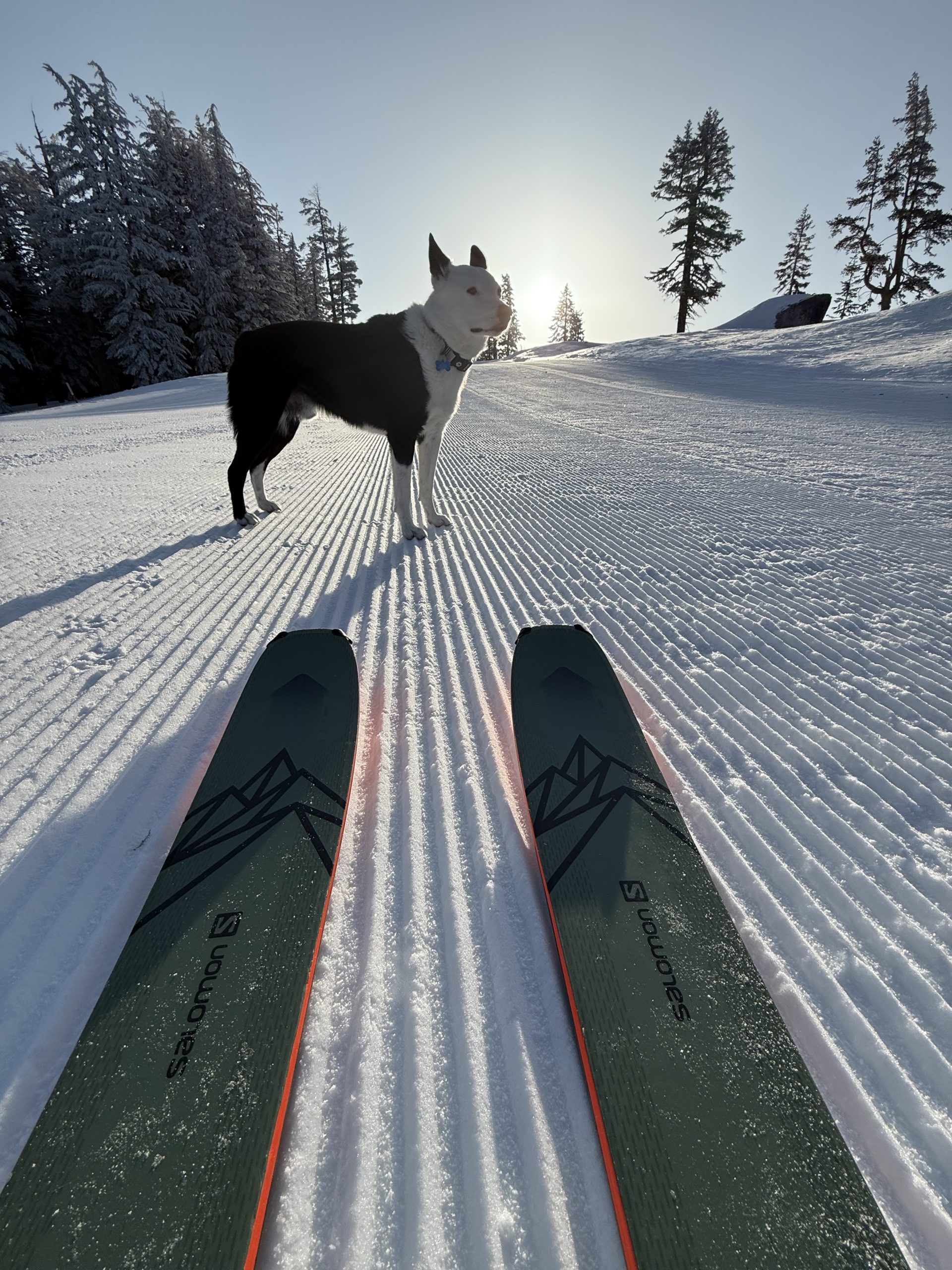How tariffs could raise the cost of your ski gear this season
Tariffs may be coming for your ski gear this winter. Here’s a breakdown of how tariffs could drive up prices at Tahoe’s local shops — and why.
On Aug. 1, President Donald Trump imposed new tariffs on imports from across the globe, including Asia and Europe, where most skis and ski-specific components, such as steel edges, are made. This has increased the cost of both importing skis into the U.S. and manufacturing them domestically.
Tariffs 101: A quick run down
Before diving into how these tariffs may affect Tahoe’s local ski shops and what price increases consumers might see this season, it’s worth revisiting what tariffs actually are.
Tariffs are taxes on imported goods, typically calculated as a percentage of a product’s value. For example, a 10% tariff on a $10 item adds $1 to the price, bringing the total to $11.
The tax is paid to the government by the importer, but that cost often trickles down. Companies may pass some, or all, of the added expense to consumers and other businesses, or reduce the amount they import. The economic ripple effects are complex, influencing consumer prices, domestic manufacturing, and international trade relations.
Trump has said the tariffs are intended to boost government revenue, encourage consumers to buy American-made goods, and spur U.S. investment. He argues that tariffs will help narrow the trade deficit, the gap between what the U.S. imports and exports, and protect American industries from what he calls “cheaters” abroad. He has also used tariffs as leverage in international negotiations, tying them to broader demands such as curbing illegal drug trafficking and migration into the United States.
Many of Trump’s tariffs have been delayed, amended or challenged in court. In August, a federal appeals court ruled that most of Trump’s tariffs were illegal. The White House has asked the Supreme Court to overturn that decision, with oral arguments scheduled for the first week of November.

How global tariffs could end up on your ski bill
As of publication, the administration has set a 15% tariff on European goods, rising to 50% for steel and aluminum — both key materials in ski manufacturing — and a 30% tariff on Chinese goods, currently suspended until November, when the rate could jump to 145%.
“We are seeing anywhere between 5% and 20% increases on our merchandise heading into this fall and winter season based on tariff-related impacts, according to our vendors,” said a spokesperson for Tahoe Mountain Sports. “Most products — from goggles and helmets to skis and boots — will see these price increases due to the tariffs.”
The new tariffs pose significant challenges for the ski industry, and Tahoe Mountain Sports is far from the only shop feeling the impact.
“Certain apparel and equipment may be discontinued or not available due to supply chain issues,” said Kylee Reeves, office manager at Village Ski Loft. “These are unavoidable obstacles everyone in the industry is facing day-to-day.”
Yet rising prices and product shortages aren’t the only issues confronting the industry
“We’ve seen price increases across all categories, as well as shipping delays, confusion, lack of guidance, and flat-out missing shipments when the rules suddenly change and packages are mid-transit,” said Leigh Dexter, Start Haus Ski & Bike Shop.
Because tariffs are only imposed once ski gear reaches U.S. shores, and because rates have changed so frequently, final prices have fluctuated even while pre-ordered products were in transit. Skis are also built from a mix of materials sourced globally, making it difficult to determine which tariffs apply and to what extent.
Some may suggest the solution is simple: bring ski manufacturing back to the U.S. But in this case, there’s little to bring back, the industry is rooted overseas.
“The brands we carry are largely imported from Europe, whether as assembled products or components, with no suitable domestic replacement,” Dexter said.
The ski industry has long been centered in Europe — where most production still takes place — and has expanded into Asia over the past two decades. Europe accounted for 40.11% of the global ski equipment market in 2024, driven by its alpine infrastructure and deep-rooted skiing traditions.
The U.S. currently lacks the large-scale manufacturing infrastructure needed to produce most ski components domestically. Many of the materials used in skis, including metal edges and base materials, are sourced abroad. While some U.S. companies design and sell ski gear, much of the actual manufacturing remains overseas. Even brands that assemble skis domestically still rely on a global supply chain.
“As a whole, this has added a new layer of logistical stress and prevents our business from doing accurate forecasting in an already challenging environment,” Dexter said.
Few industries depend so heavily on a four-month sales window that’s also tied to weather. If snow doesn’t come early, especially before Christmas, the ski industry already takes a financial hit. Adding another unpredictable factor can make things harder for operations.
The question, then, is who will ultimately shoulder the burden of these tariffs — manufacturers, distributors, retailers, consumers… or perhaps all of the above?
According to Tahoe Mountain Sports’ spokesperson, “It’s unfortunate that ordinary consumers, and likely America’s small businesses, will bear the brunt of these impacts most acutely.”

Support Local Journalism

Support Local Journalism
Readers around the Lake Tahoe Basin and beyond make the Tahoe Tribune's work possible. Your financial contribution supports our efforts to deliver quality, locally relevant journalism.
Now more than ever, your support is critical to help us keep our community informed about the evolving coronavirus pandemic and the impact it is having locally. Every contribution, however large or small, will make a difference.
Your donation will help us continue to cover COVID-19 and our other vital local news.










